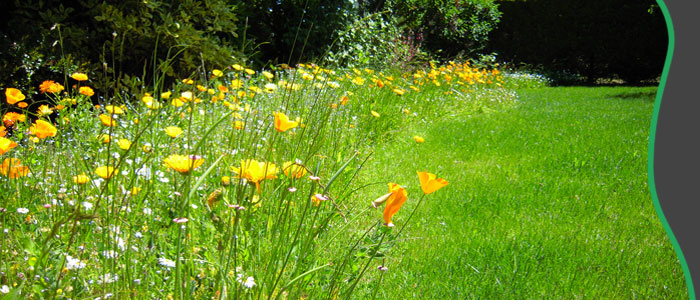Content
- How Rehab Assists People with an Alcohol Dependency
- Gene expression analyses
- Distribution of Dopaminergic Neurons
- People energized by alcohol are genetically predisposed to drink more heavily.
- x-on:slide-change.window= »currentIndex = $event.detail.currentIndex »
- Investigating Alcohol’s Effects on Memory
For the McGill study, researchers recruited 26 healthy social drinkers (18 men, 8 women), 18 to 30 years of age. The higher-risk subjects were then identified based on personality traits and having a higher tolerance to alcohol (they did not feel as drunk despite having drunk the same amount). Finally, each participant underwent two positron emission tomography (PET) brain scan exams after drinking either juice or alcohol (about 3 drinks in 15 minutes). The human brain uses a number of chemicals – known as neurotransmitters – to carry messages. One of the most important of these is dopamine, which is often thought of as a ‘happy hormone’. When we start drinking alcohol, our bodies produce extra dopamine, which travels to the parts of the brain known as ‘reward centres’ – the bits that make us feel good and make us want to do more of whatever we’re doing [1].
In addition, this study only included males due to sex differences in the dopamine system [118, 119]. Finally, preclinical studies demonstrate phasic dopamine release in response to conditioned reinforcers [23, 36], and P/T depletion suppresses spontaneous dopamine transients in the NAc of rats at rest [57]. However, in this study, the behavioral tasks were performed after the resting-state scan; future work pairing event-related fMRI AB tasks with the P/T depletion procedure may provide additional insight into the dopamine response to alcohol or non-drug reward cues.
How Rehab Assists People with an Alcohol Dependency
Among the neurotransmitter systems linked to the reinforcing effects of alcohol are dopamine, endogenous opiates (i.e., morphinelike neurotransmitters), GABA, serotonin, and glutamate acting at the NMDA receptor (Koob 1996). Complex interactions between these neurotransmitter systems are likely to be important for the development and maintenance of alcohol-seeking behaviors. For example, alcohol has been shown to activate dopamine systems in certain areas of the brain (i.e., the limbic system) through an interaction with glutamate receptors (Koob 1996). Moreover, dopamine systems appear to be inhibited after alcohol withdrawal, and this inhibition can be reversed by alcohol consumption (Koob 1996).
Studies in animal models provide initial hints to possible contributors to these differences. Furthermore, rats undergoing intermittent access to 20% alcohol in 2 bottle choice paradigm exhibit distinct profiles of intake ranging from low alcohol consumers to rats that exhibit slow or rapid escalation of excessive drinking [125]. The kappa-opioid receptor (KOR) and its endogenous ligand dynorphin peptide have been an area of great interest.
Gene expression analyses
To modulate the responsiveness of neighboring neurons to glutamate, dopamine modifies the function of ion channels in the membrane of the signal-receiving (i.e., postsynaptic) neuron. The activity of some of these ion channels (i.e., whether they are open or closed) depends on the voltage difference, or potential, between the inside and the outside of the cell membrane adjacent to these channels. Through its effects on G proteins, dopamine indirectly modifies the sensitivity with which voltage-dependent channels respond to changes in the membrane potential that occur when glutamate binds to its receptors, which also act as ion channels (i.e., receptor-operated channels). It starts to produce less of the chemical, reduce the number of dopamine receptors in the body and increase dopamine transporters, which ferry away the excess dopamine in the spaces between brain cells.
Yim H and Gonzales R. Ethanol-induced increases in dopamine extracellular concentration in rat nucleus accumbens are accounted for by increased release and not uptake inhibition. Exciting developments are happening in the world of addiction that will allow clinicians and researchers to develop targeted therapies that may be able to prevent addiction and alcohol-related brain damage in dependent individuals. Thiamine deficiency in alcohol dependence occurs because of poor absorption of thiamine from https://ecosoberhouse.com/ the GI tract, impaired thiamine storage and reduced thiamine phosphorylation in the brain, reducing the amount of active thiamine in the brain. Alcohol dependence is characterised by deficits in the physiological dysregulation of motivation and reward systems, such as those in the limbic system, hippocampus, amygdala, caudate nucleus, frontal lobe and nucleus accumbens. The detailed necropsy procedures used to harvest tissues [28] and obtain ex vivo slices [8] have been previously described.
Distribution of Dopaminergic Neurons
Thanks are also due to my mother, Dr. Sharmila Banerjee, without whose support and editorial help, I could not have had the will to complete this work. Furthermore, I would like to state that no financial aid in any form was received for undertaking this work. It is classified as a catecholamine (a class of molecules that serve as neurotransmitters and hormones). It is a monoamine (a compound containing nitrogen formed from ammonia by replacement of one or more of the hydrogen atoms by hydrocarbon radicals).
Disulfiram administration helps patients learn non-drinking behaviours and the ability to exercise self-control. Most individuals cease alcohol use after the administration of disulfiram due to the strong expectancy of negative consequences. Naltrexone is an opiate-receptor antagonist and has been shown to limit cravings by reducing the positive reinforcement effect of alcohol consumption. There is evidence of a link between serotonin deficiency, impulsivity and drinking behaviour which may explain the role of SSRIs in suppressing alcohol reinforced behaviour in some alcohol-dependent patients.
The major excitatory neurotransmitters in the brain are the amino acids aspartate and glutamate, which act through both NMDA receptors—so named because they respond to the synthetic chemical N-methyl-d-aspartate—and non-NMDA receptors. Short-term exposure to intoxicating concentrations of alcohol appears to inhibit both NMDA and non-NMDA receptor activity, potentially resulting in sedation (Valenzuela and Harris 1997). As in the case of GABAA receptors, however, these excitatory receptors are relatively insensitive to intoxicating concentrations of alcohol under some experimental conditions (Wright et al. 1996), underscoring the need for more research in this area. Researchers are focusing much of their attention on other inhibitory neurotransmitters. Glycine is the major inhibitory neurotransmitter in the spinal cord and brain stem. Alcohol has been shown to increase the function of glycine receptors in laboratory preparations (Valenzuela and Harris 1997).


